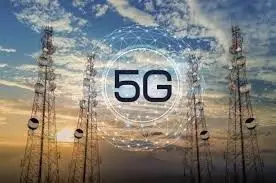Bangladesh Satellite Company Limited (BSCL), through the Posts and Telecom Division (PTD), has requested the telecom regulator to require satellite internet providers, including Starlink, to route bandwidth through BSCL’s ground station. This move aims to optimize resource utilization and revenue growth for the state-owned company, according to documents reviewed by The Business Standard.
However, the Bangladesh Telecommunication Regulatory Commission (BTRC) is unlikely to mandate such a requirement for non-geostationary satellite orbit (NGSO) operators, fearing it could deter global satellite internet providers like Starlink. Regulatory sources suggest that imposing such a condition may dissuade companies such as Elon Musk’s SpaceX, which operates Starlink, from entering the Bangladeshi market.
Starlink is the first satellite internet service provider to enter Bangladesh, and several other global firms are in discussions with the BTRC. The BTRC is set to submit the final “Regulatory and Licensing Guidelines for NGSO Satellite Services Operator” to the PTD this week, according to BTRC Chairman Major General (rtd) Md Emdad ul Bari.
Shah Ahmedul Kabir, BSCL’s General Manager and Head of Sales and Marketing, stated that under the published draft of the guidelines, NGSO operators must obtain bandwidth from local international internet gateways (IIGs) and route it to their satellites via a ground station in Bangladesh, complying with the country’s telecom laws. This would allow satellite providers to deliver bandwidth directly to customer devices, ensuring internet access for remote communities.
BSCL’s ground station, which supports geostationary satellites located 35,000 km above the Earth, may require additional investment in antennas to accommodate the lower orbit of NGSO satellites, which range from 500 to 2,000 km above the Earth.
Starlink has already completed successful tests in Bangladesh using five receivers for end users. Experts see the potential for Starlink to enhance connectivity in remote areas, particularly in regions where fiber optic and mobile internet infrastructure is underdeveloped. However, the cost of using Starlink remains a concern, as the equipment can cost between $500 and $700, with monthly fees of $120 for a 100 Mbps connection.
The success of Starlink in Bangladesh will depend on its affordability and the possibility of equipment rental models, which could make it more accessible, particularly for rural ISPs and institutional users. Experts also believe that if implemented effectively, Starlink could improve connectivity in remote areas, facilitating remote education, healthcare, and disaster response.
Local internet service providers have called for a level playing field, with equal tax rates and tariffs for both satellite and non-satellite internet providers to ensure healthy competition in the sector.















